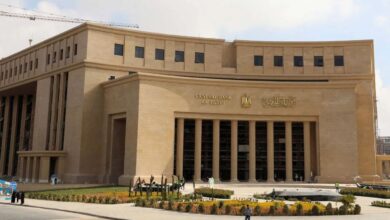
Egypt’s inflation has fallen to some of its lowest levels in well over a decade, potentially triggering consultations with the International Monetary Fund (IMF) under the conditions of a new US$5.2 billion loan.
The trend also sharpens a dilemma for the central bank: whether to keep interest rates high to sell treasury bills and protect the currency, or lower them to encourage growth in an economy battered by the coronavirus pandemic.
Under a one-year, US$5.2 billion Stand-By Arrangement signed with the IMF in June, Egypt committed to consulting a technical team if inflation were to fall below 6 percent by end-September and the IMF board itself if year-on-year inflation falls below 4 percent.
Headline inflation slackened to 3.4 percent in August from 4.2 percent in July, near its slowest since 2005. Some economists expect the September figure, expected around Oct. 10, to be similar.
If inflation falls too quickly, the IMF could argue that the central bank’s monetary committee should consider lowering interest rates when it next meets on November 12, some economists said.
The central bank has been reluctant to reduce rates until it is sure dollar flows such as tourism, worker remittances and foreign purchases of Egyptian treasuries are once again stable, they added.
“I don’t think they’re comfortable cutting rates when the external balances are still under pressure. High real rates also keep the carry trade going,” said Mohamed Abu Basha, an economist with EFG Hermes.
An IMF staff report last month did not define what period it would use to measure inflation or when any consultation might be held. Neither the IMF nor the central bank immediately responded to requests for clarification.
Egypt’s subdued inflation is partly the result of tighter control of the money supply since a 2016 IMF programme, a concerted push to invest in agriculture, and a lack of consumer demand because of the coronavirus pandemic.
M2 money supply growth slipped to as low as 11.33 percent last year from as high as 25.4 percent in the wake of the three-year, US$12 billion 2016 IMF agreement. Since the outbreak of the pandemic, M2 has once again begun climbing.
Investment in agriculture, mainly by the government, reached a substantial 0.92 percent of the gross domestic product in fiscal 2018/19, according to central bank figures. Food products form an important part of the consumer price basket.
‘SUPPORTING GROWTH’
Inflation soared to a peak of 33.0 percent in July 2017 after Egypt implemented IMF austerity measures including a fuel price hike, a 13 percent value-added tax and taxes on tobacco, while cutting the value of the currency in half against the dollar.
To tame inflation to such a degree in a lower-income emerging market like Egypt was an exceptional achievement, said Charles Robertson, chief economist at Renaissance Capital.
“But I think the focus needs to shift in 2021, 2022, to supporting growth,” he said, adding that manufacturing investment hadn’t taken off partly because of the coronavirus.
Central banks in developing countries have cut interest rates for 20 straight months, exceeding the easing cycles sparked by the 2008 financial crisis and in the wake of the 2010 euro crisis, though the pace of reductions continued to slow in September.
On Sept. 24, Egypt’s monetary committee cut the overnight lending rate by 50 basis points to 9.75%, saying that leading indicators over the summer pointed to a gradual recovery in economic activity.
The bank said it expected inflation to rise to the lower part of its 6-12 percent target band in the fourth quarter due to unfavorable base effects.
BofA Global Research said the 50 basis point cut may have sought to preempt IMF pressure to reduce rates in November.




